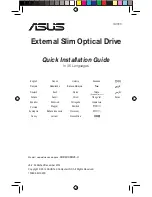
Rockwell Automation Publication 750-UM006C-EN-P - March 2022
199
Periodic and Preventive Maintenance
Chapter 7
See PowerFlex 750-Series AC Drives Programming Manual, publication
for details on the Predictive Maintenance parameter group in the
Protection folder and programming examples. The design life expectancy of
the overall components normally exceeds 10 years (in some cases it can last 20
years or more) in normal operating environments.
Operating Mechanisms
— Check for proper functioning and freedom from
sticking or binding. Replace any broken, deformed, or badly worn parts or
assemblies according to individual product renewal parts lists. Check and
securely re-tighten (if necessary) any loose fasteners. Lubricate (if specified)
per individual product instructions.
Contacts
—Check contacts for excessive wear and dirt accumulations.
Discoloration and slight pitting are acceptable. Do not file contacts. Do not
use contact spray cleaners, as residues can cause sticking or interfere with
electrical continuity. Replace the contacts only after the silver has become
badly worn. Always replace contacts in complete sets to avoid misalignment
and uneven contact pressure.
Terminals
— Loose connections can cause overheating that can lead to
equipment malfunction or failure. Check the tightness of all terminals –
securely tighten any loose connections. Replace any parts or wiring that is
damaged by overheating. Also check ground connection integrity.
Coils
—If a coil exhibits evidence of overheating (cracked, melted, or burned
insulation), it must be replaced. In that event, check for and correct overvoltage
or undervoltage conditions, which can cause coil failure. Be sure to clean any
residues of melted coil insulation from other parts of the device or replace such
parts.
High-Voltage Testing
— Do not perform high-voltage insulation resistance
(IR) and dielectric withstanding voltage (DWV) tests to check solid-state
control equipment. When measuring IR or DWV of electrical equipment such
as transformers or motors, a solid-state device that is used for control or
monitoring must be disconnected before performing the test. Even though no
damage is readily apparent after an IR or DWV test, the solid-state devices are
degraded and repeated application of high voltage can lead to failure.
Final Check Out
— After maintenance or repair of industrial controls, always
test the control system for proper functioning under controlled conditions that
avoid hazards if a control malfunction occurs.
IMPORTANT
Allen-Bradley® magnetic starters, contactors, and relays are designed to
operate without lubrication - do not lubricate these devices. Oil or grease on
the pole faces (mating surfaces) of the operating magnet can cause the device
to malfunction. Some parts of other devices are lubricated at the factory. If
lubrication during use or maintenance of these devices is needed, it is specified
in their individual instructions. If in doubt, consult the nearest Rockwell
Automation sales office for information
















































